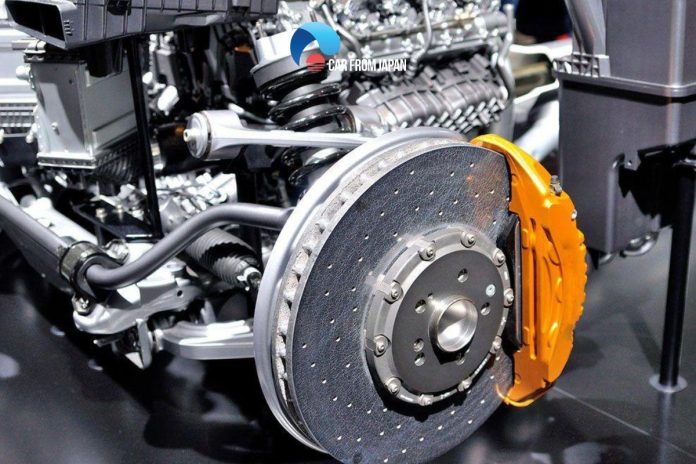Nowadays, vehicles are equipped with many systems to protect the driver. Anti-lock Braking System (ABS) is one of them.
There are some ways to bleed the ABS module that require specific tools. But what if you don’t have one? This post will let you know how to bleed ABS module without scan tool!
Contents
- What is an Anti-lock Braking System (ABS)?
- How To Bleed ABS Module Without Scan Tool?
- What Happens When Air Gets Into The ABS System?
- When You Should Bleed The Brake System?
- FAQs on ABS Module Bleeding
- How can I tell if my ABS module still has air trapped inside?
- Can air in the ABS module cause a complete brake failure?
- Why do some ABS systems require a “key-on” bleeding process?
- How long does it take to properly bleed an ABS system?
- What happens if I drive without bleeding the ABS module after repairs?
- Final Words
What is an Anti-lock Braking System (ABS)?
Before knowing how to bleed ABS brakes, let’s find out what is an ABS and why we need one.
ABS or an Anti-Lock Braking System is a piece of safety equipment that prevents the wheels of a vehicle from locking up under emergency, panic, or harsh braking conditions and helps them maintain grip on the road.
There are four major components of a typical anti-lock braking system:
- Speed sensors – They keep track of how fast the wheel or wheels are rotating
- Valves – Valves in the brake line allow, block, and release pressure on the brakes by assuming three different positions
- Pump – These pumps are filled with hydraulic fluid and apply pressure to the brake drums or calipers on demand
- Controller – The electronic control unit (ECU) is the brain of the ABS and uses data from the sensors to determine whether to pump the brakes or not.
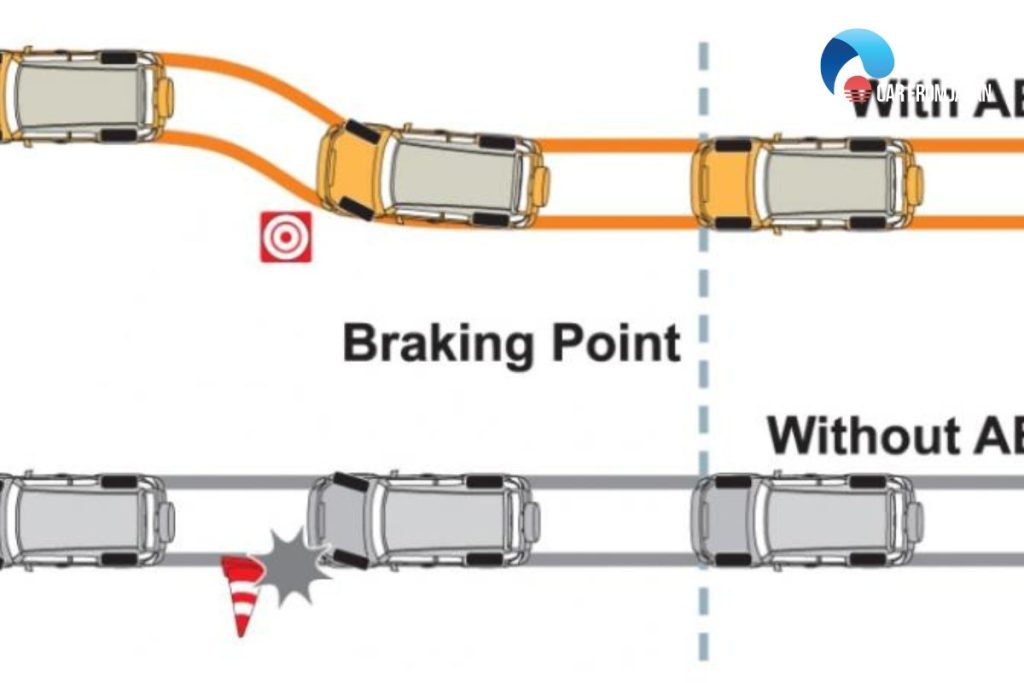
How To Bleed ABS Module Without Scan Tool?
Bleeding ABS brakes is more challenging than the process of bleeding the brake system because the ABS module has a lot of chambers and moving parts in it. Most ABS modules do have bleeding valves but usually, these are not enough to take all the air out.
While it is time-consuming work for a DIY-er, the process is not too complicated. Here are the steps of how to bleed air from ABS module. Follow the instructions below and you will know how to bleed ABS brakes without scan tool.
Things you will need
Bleeding the ABS module is not so difficult to do. But it might take some time because you need to bleed each wheel separately. If wonder how to bleed ABS module without scan tool, here are the tools you need.
- Car jack
- Turkey baster
- Drip pan
- Brake fluid
- Tubing
- Hammer
- Lug wrench
- Car Stands
Step 1 – Getting ready
First, you will need to park the car on a flat level with good lighting and ventilation conditions. Engage the parking gear to make sure that the emergency brakes are applied.
Step 2 – Removing the wheels
Using the car jack, lift the car to a comfortable level so that you can remove the four wheels comfortably so that you can reach the bleeders easily.
Step 3 – Drain the brake fluid
The brake fluid resolve is placed under the hood of your car. It is a small transparent container with metal tubes connecting to each wheel. These are the so-called brake lines.
When you have located the reservoir, empty the old brake fluid completely and refill it with a new one. Make sure that you get the right fluid for your car by asking your trusted mechanic before buying.
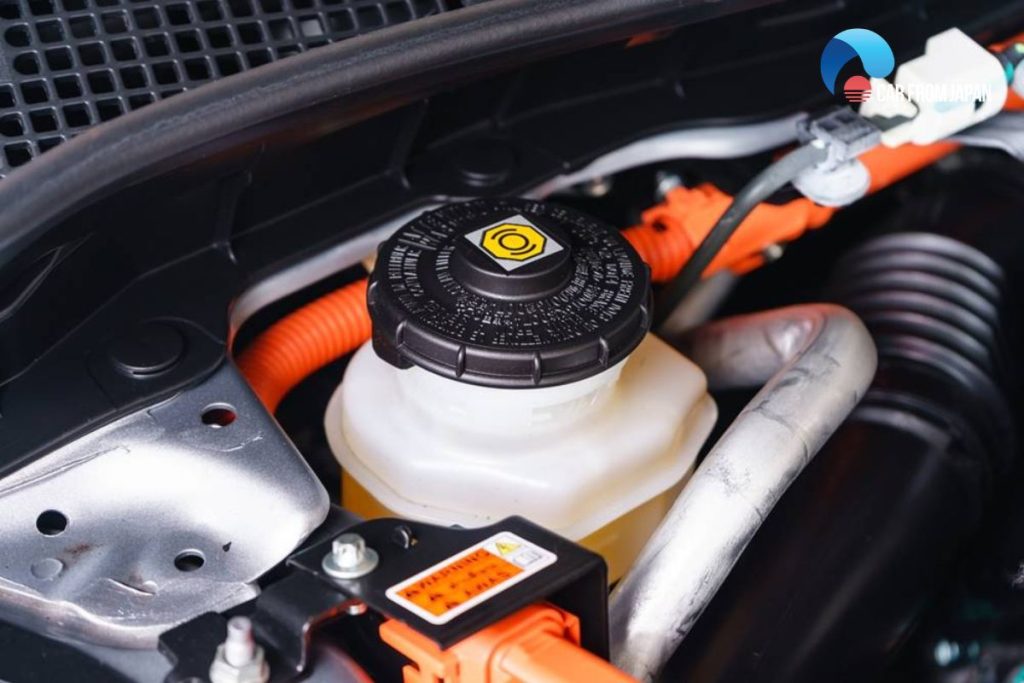
Step 4 – Locate the brake bleeder screw
The next step of how to bleed the ABS module without a scan tool is reaching the bleeding port in the brake caliper.
Use the correct bleeder wrench to loosen the bleeder screw, remove the dust cap and take the vacuum hose, tubing and put one end of it in an empty plastic bottle and the other end attached to the bleeder screw.
Take someone with you as a helping hand to pump the brake continuously until all the fluid has been drained into the bottle. Once done with all the wheels, you can confirm if the brake fluid reservoir is indeed empty.
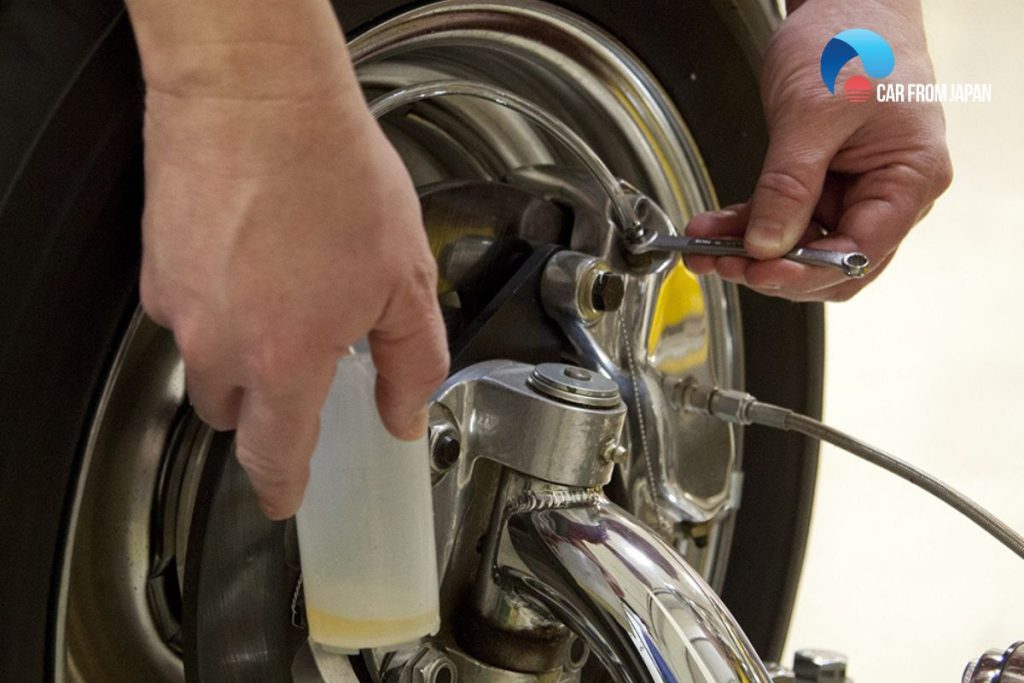
Step 5 – Tighten the bleeder screw and refill the cylinder
Just before returning the bleeder screw, ask your friend to press the brake pedal down and hold it there.
Open the bleeder screw to let trapped air get out and tell him to keep holding the pedal until you are sure that the bleeder screw is tight as it was before. You have to repeat this process several times to ensure no air bubbles are left in the brake lines.
Keep in mind that you have to do this for all the wheels, and it must be in the following order: Right rear, left rear, right front, left front.
The bleeding process varies depending on the model of the vehicle or the ABS system that you have. The steps we mentioned should work for most generic ABS.
After that, open the master cylinder and refill it with new brake fluid until it reaches the full level.
Make sure that when you are draining the brake fluid, keep checking the fluid levels on the master cylinder so as not to drain the cylinder and let air get into the system.
Step 6 – Check for the leaks
After bleeding all the brake lines, tell your friend to pump the pedal and you walk around the vehicle to check if there are any leaks because of pumping. During this, your friend should ensure the pedal goes up and down to the recommended levels.
Step 7 – Put the parts back together
The last step of how to bleed the ABS module without a scan tool is to refit all the wheels back and be ready to test your brakes.
Take a test drive to see if the brakes are working right. Also, remember to clean the area as you might have let the residue liquid pour around. Safety first!
Read More: How To Bleed A Clutch: Bleeding Both Slave And Master Cylinder
Watch the video from The Daninator to know more about difference methods to bleed ABS module!
What Happens When Air Gets Into The ABS System?
Air gets inside the braking system every time you open it for some repairs or other purposes. Some air inside the system affects the brake pedal’s impact, making it feel soft like a sponge upon being pressed.
When you brake, the hydraulic fluid transfers this pressure to other brake components. However, when there is air in the system, pressing on the pedal compresses the air first, making the pedal feel squashy.
Sometimes, the pedal feels strangely low and sluggish in response when you are pressing it to slow down the car in traffic. It is a warning sign indicating air bubbles in the brakes. You must remove these unwanted bubbles by bleeding brakes with ABS.
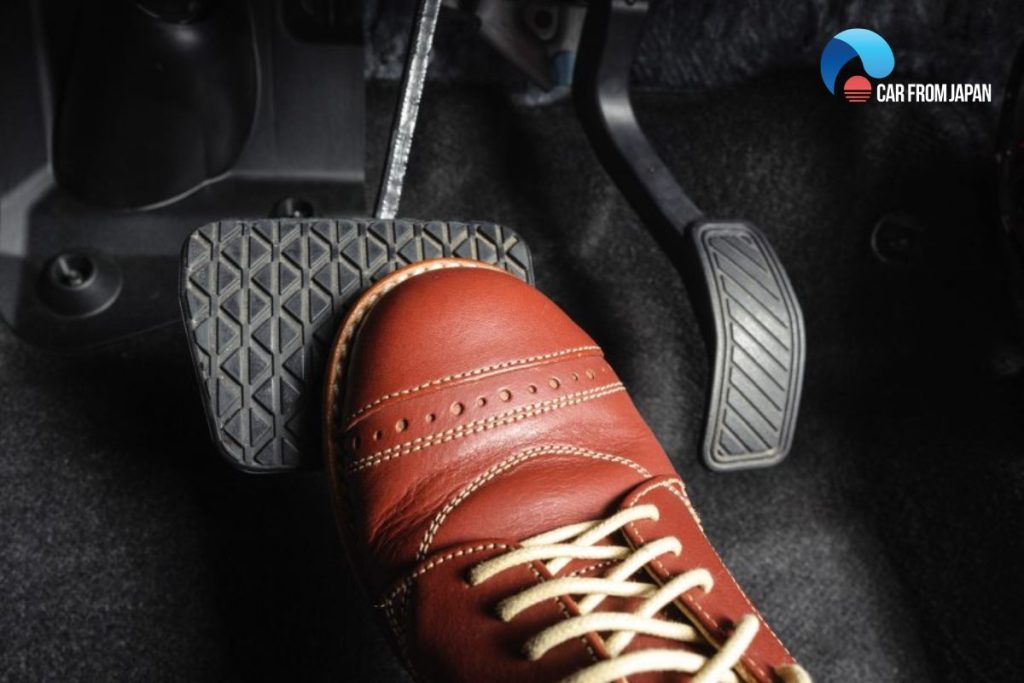
When You Should Bleed The Brake System?
In normal operation, you do not need to bleed the brake system. But there are some cases that will require bleeding.
- The brake pads are completely worn out: This causes the fluid level in the master cylinder to drop.
- If it drops too far, the air gets into the brake system. By then you will have to read again how to bleed the ABS module without a scan tool in case you do not have one.
- Disc brake caliper or drum brake cylinder replacement: This requires disconnecting the brake lines. When that happens, air will enter the brake lines.
- Replacement of some other brake system components: A disconnected hydraulic part within the brake system causes air to get into the brake lines. The master cylinder is a good example.
- Compressed caliper piston: Sometimes you need to open the bleeder valve to compress the piston while changing brake pads. This can allow air to enter the brake lines.
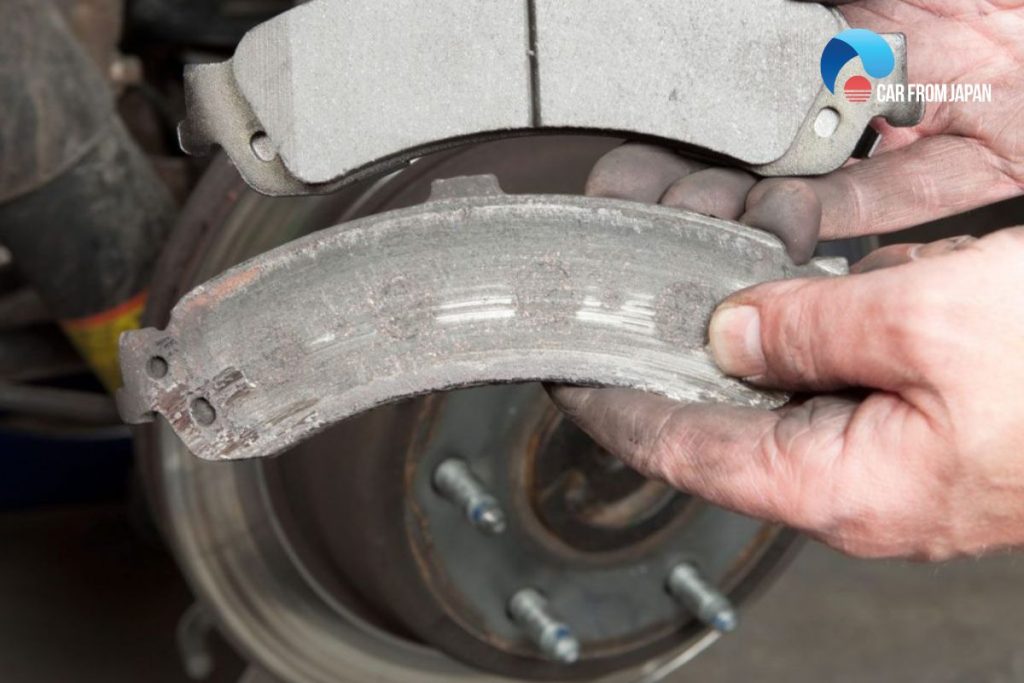
FAQs on ABS Module Bleeding
How can I tell if my ABS module still has air trapped inside?
Symptoms of air in the ABS module include a spongy or soft brake pedal, inconsistent braking performance, or the ABS light staying on after a brake job.
In extreme cases, you may experience delayed braking response or an uneven pedal feel during hard stops.
Can air in the ABS module cause a complete brake failure?
Not completely, but it can significantly reduce braking efficiency.
Since air compresses under pressure, having air in the ABS module can result in a soft or unresponsive brake pedal, making it harder to stop the vehicle safely.
Why do some ABS systems require a “key-on” bleeding process?
Certain ABS modules use electronically controlled valves that remain closed when the ignition is off.
Turning the key to the “on” position (without starting the engine) allows the valves to open, enabling proper fluid circulation and effective bleeding.
How long does it take to properly bleed an ABS system?
It varies by vehicle, but a full ABS system bleed typically takes between 30 minutes to an hour.
If air is deeply trapped in the module, additional steps using a scan tool may extend the process.
What happens if I drive without bleeding the ABS module after repairs?
Driving with air trapped in the ABS system can lead to unpredictable braking performance, longer stopping distances, and increased risk of brake failure in emergencies.
Always bleed the system properly after any ABS-related repair.
Final Words
How to bleed ABS module without scan tool may seem a little bit difficult but regardless of your car type, the steps we showed should help you get over with the problem.
Hopefully, this post will help you if you have decided to bleed the ABS module at home and without a scan tool. If you know any better solutions or suggestions, feel free to comment below and keep track with us for more useful tips.

